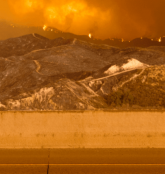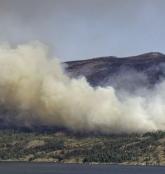Insurance-linked securities (ILS) investors want to know more about how climate change impacts investment decisions, according to Paul Wilson, head of non-life analytics at Securis Investment Partners, an ILS asset manager
 We make investments that are typically annual to two-to-three years in duration, so we need to understand the implications of climate change on those timescales,” explains Paul Wilson, head of non-life analytics at Securis Investment Partners. “We reevaluate investments as part of any renewal process, and it’s right to ask if any opportunity is still attractive given what we know about how our climate is changing.
We make investments that are typically annual to two-to-three years in duration, so we need to understand the implications of climate change on those timescales,” explains Paul Wilson, head of non-life analytics at Securis Investment Partners. “We reevaluate investments as part of any renewal process, and it’s right to ask if any opportunity is still attractive given what we know about how our climate is changing.
“The fundamental question that we’re trying to address is, ‘Have I priced the risk of this investment correctly for the next year?’” he continues. “And therefore, we need to know if the catastrophe models we are using accurately account for the impact climate change may be having. Or are they overly reliant on historical data and, as such, are not actually representing the true current risk levels for today’s climate?”
Expertise in climate change is a requirement for how Securis is thinking about risk. “We have investors who are asking questions about climate change, and we have a responsibility to be able to demonstrate to them that we are taking the implications into consideration in our investment decisions.”
“We have investors who are asking questions about climate change, and we have a responsibility to demonstrate to them that we are taking the implications into consideration in our investment decisions
Paul Wilson
Securis Investment Partners
The rate at which a changing climate may influence natural catastrophes will present both a challenge and opportunity to the wider industry as well as to catastrophe modeling companies, thinks Wilson. The results coming out of climate change attribution studies are going to have to start informing the decisions around risk. For example, according to attribution studies, climate change tripled the chances of Hurricane Harvey’s record rainfall.
“Climate change is a big challenge for the catastrophe modeling community,” he says. “It’s going to put a greater burden on catastrophe modelers to ensure that their models are up to date. The frequency and nature of model updates will have to change. Models we are using today may become out of date in just a few years’ time. That’s interesting when you think about the number of perils and regions where climate change could have a significant impact.
“All of those climate-related models could be impacted by climate change, so we have to question the impact that is having today,” he adds. “If the model you are using to price the risk has been calibrated to the last 50 years, but you believe the last 10 or last 20 years are more representative because of the implication of climate change, then how do you adjust your model according to that? That’s the question we should all be looking to address.”



 We make investments that are typically annual to two-to-three years in duration, so we need to understand the implications of climate change on those timescales,” explains Paul Wilson, head of non-life analytics at Securis Investment Partners. “We reevaluate investments as part of any renewal process, and it’s right to ask if any opportunity is still attractive given what we know about how our climate is changing.
We make investments that are typically annual to two-to-three years in duration, so we need to understand the implications of climate change on those timescales,” explains Paul Wilson, head of non-life analytics at Securis Investment Partners. “We reevaluate investments as part of any renewal process, and it’s right to ask if any opportunity is still attractive given what we know about how our climate is changing.


